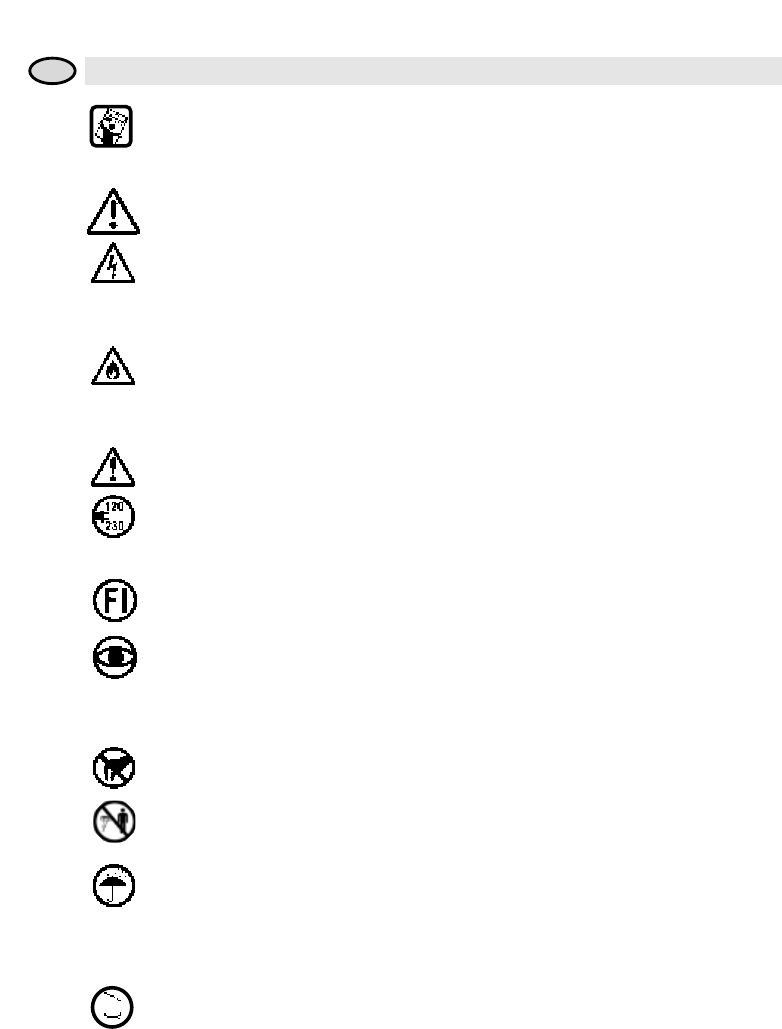
2
SAFETY INSTRUCTIONS
Danger! When working with heat guns it is vital to follow the following preventive
safety guidelines to avoid the risk of fire, explosion, electric shock and bodily injuries.
Read these instructions attentively before you use the tool.
Keep these instructions in a safe place.
Warning
• Danger! Unplug the tool before opening it, as live components and connections
are exposed.
• The appliance must not be used in damp or wet surroundings.
• Avoid contact with earthed items, e.g. pipes, radiators, cookers or refrigerators.
• Do not use in bathroom or over water.
• Danger of fire and explosion through improper use of heat guns. Beware of
poisonous gases, risk of explosion and ignition. When plastics, lacquers and
similar materials are being processed, toxic, explosive and poisonous gases can
be generated.
• The working space must always be well ventilated.
Caution
• The voltage rating stated on the tool should correspond to the main power voltage.
• Avoid unexpected start-up. Temperature-limit-switch heating off in case of
improper use. Attention! Heating is automatically switched on again after cooling.
• Ensure that the switch is OFF when connecting to the main power supply.
• For personal protection, we strongly recommend the tool be connected to an RCCB
(Residual Current Circuit Breaker) before using.
• The tool must not be operated without supervision.
• Do not use the tool if inflammable gases may be present. Areas behind shutters,
ceilings and floors and in hollow walls may contain flammable material. These mate-
rials must be checked before using heat gun. Heat may reach materials which
are not visible. Do not aim the stream of hot air at the same spot for extended pe-
riods.
• Cause burns! Do not touch the heat nozzle and adapter when hot as they can cause
burns. Never use the tool as a hair dryer. It gets much hotter than a hairdryer!
• Do not point the hot air flow in the direction of people or animals.
• Keep children at a distance. Do not allow other people to touch the tool or cord, keep
them away from the work area.
• Consider work area environment. Protect tool from damp and wet.
Work area
• Keep your work area clean. Cluttered areas and benches invite injuries.
• Do not wear loose or flammable clothing.
• D not overreach. Keep proper footing and balance of all times.
• Use only accessories which are indicated in the instructions for use or are recom-
mended by the manufacturer. The use of accessories other than those indicated in the
instruction for use can mean risk of injury.
USA


















